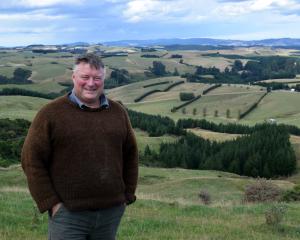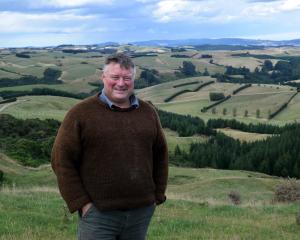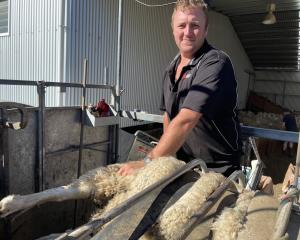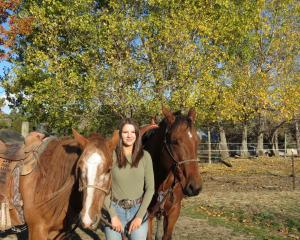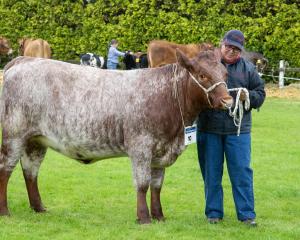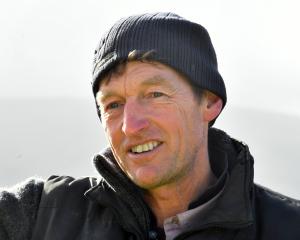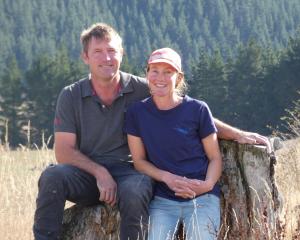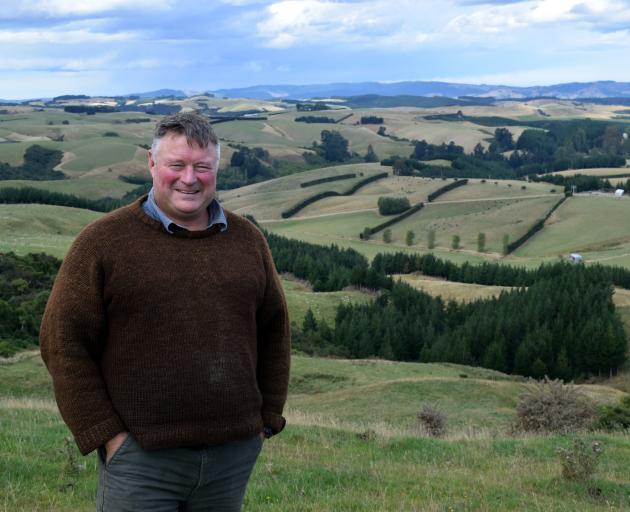
Sheep and beef farmer Rob Hewett is proud to be a farm forester and able to add value to another commodity on his farm in South Otago.
"It’s a good news story that needs to be told, so let’s tell it," Mr Hewett said, talking to Southern Rural Life at his farmhouse in the Manuka Gorge, between Milton and Waitahuna.
Not every farm forester has been as welcoming when Southern Rural Life calls.
Requests to cover two New Zealand Farm Forestry Association field days in Otago were rejected because the respective farmers had concerns about negative media reports of trees being planted on sheep and beef farms.
Mr Hewett said talking to the media about farm forestry could make him a target for criticism but he believed it was important to talk about the opportunities available in the sector.
Most of the stock on his more than 1000ha farm Wainui were Romney ewes and Angus cows.
Some store lambs were sent away and the rest of the stock was kept to finish on farm.
His farm was carbon positive from planting about 300,000 trees across 200ha of the farm since buying it about 20 years ago.
"Make no mistake, I like trees but they have to be in the right spot," he said.
When he bought the farm, trees covered 1.4ha of the farm.
If a paddock on the farm was too steep for a tractor to cultivate then "it was a candidate for trees".
Since buying the farm, the stocking rate on the footprint of the original farm had increased slightly.
When they bought the farm, they were running slightly more than 8000 stock units.
Now the original farm block runs 1000 more stock units, despite the planting of 200ha of trees.
Many of the trees were planted where gorse once grew so there was a minimal loss of grass.
Other ways the stocking rate increased was better subdivision of paddocks to gain greater control on the feed and water given to stock.
The stocking rate was also increased by using better pasture species and breeding more efficient ewes and cows.
About 50ha of the farm, split in seven blocks, was protected by QEII National Trust covenants.
The QEII blocks and another 110ha of his farm was in the Emissions Trading Scheme, he said.
Some smaller forestry blocks, about 40ha, which were ineligible for the scheme, he would use to supply carbon credits to Silver Fern Farms’ net carbon zero programme, which was another opportunity to add some value.
The aspiration of his farm business was to link every commodity on the farm to a programme to add value. He hoped programmes to add value to sheep and beef commodities would help retain farmers in the sector.
Carbon forestry had been planted across productive sheep and beef farms in the wider South Otago area, which was "sad" and "gutting communities".
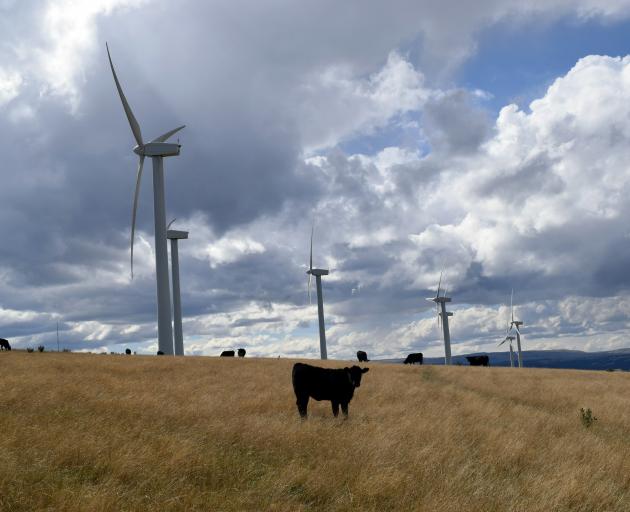
More sheep and beef farms would be planted in carbon forestry if farmers could not make enough revenue from their sheep and beef commodities.
As a chairman of various organisations including Silver Fern Farms, Farmlands and WoolWorks, he hoped sheep and beef farmers were presented enough opportunities "to keep carbon farming at bay".
Meat companies needed to create a value proposition that was sufficiently compelling to stop more sheep and beef farmers changing their land-use to carbon farming.
Mr Hewett was not against planting trees on farms.
"I’m not a fan of putting trees in paddocks but trees in a gorsey gully — big tick."
He collected native seed on his farm, growing seedlings in his farm office before moving them to the on-farm nursery.
The future for red meat and wool was brighter than it had ever been but change was needed, he said.
"We can’t do it the way we’ve been doing it."
Red meat from international markets such as Brazil dampened export prices but New Zealand was supplying a premium product and was better at proving it was farming in a more sustainable way.
"This is our point of difference globally," he said.
A goal of his farm was for all its Angus cattle to fetch a premium from a Silver Fern Farms programme.
As his farm was sequestering carbon, his beef fetched a Net Carbon Zero premium from Silver Fern Farms.
The plan was to continue to reduce emissions and sequester more carbon in many different ways "because the market is wanting it", he said.
"Everyone can have their view if this is a good thing or just interference — it doesn’t matter at the end of the day — the customer is the one who makes the call."
International customers did not need New Zealand meat or fibre: there was always a cheaper alternative.
Consequently, the customers needed a reason to want to buy them so a commodity needed to be more than high quality, it needed a story, he said.
A story of a commodity’s provenance added value and created a point of difference from other exporters, he said.
A way he added value to his wool was having blankets made from his lamb’s wool. In his woolshed, 15 bales of lamb’s wool were ready for collection to be made into Rātā Creek blankets.
His wife Jane Montgomery was the driving force behind the blankets.
As chairman of WoolWorks, the biggest wool scourer in the world, he believed there were plenty of opportunities to add value to strong wool.
"For strong wool the opportunities are significant and not that far away — I’m buoyant."
Consumers were more discerning and seeking natural products which made them feel good and wool fitted "right into that space".
He was also preparing his farm for when the market would one day pay premiums to farmers protecting and enhancing the biodiversity on their properties.



